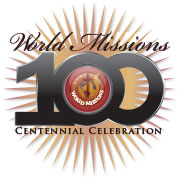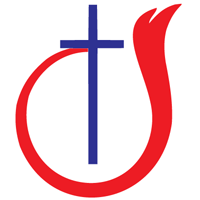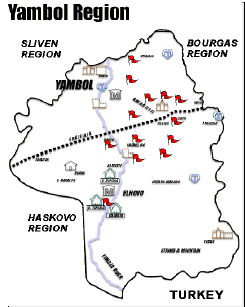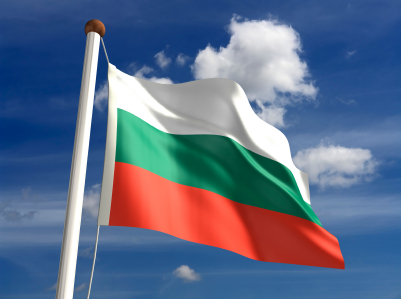Are you Mission Ready?
 Evaluation is the act of finding out if a person or groups has accomplished what it set out to do. Sincere evaluation of the local church missions program is a problem. We avoid such evaluation by assuming people automatically incorporate new learning in their lives and by assuming that programs cannot be improved very much even if they were evaluated. Too often they are labeled as good or bad by one person or by those who manage or plan the program. Both learners and administrators must cooperate in organized evaluation. [more]
Evaluation is the act of finding out if a person or groups has accomplished what it set out to do. Sincere evaluation of the local church missions program is a problem. We avoid such evaluation by assuming people automatically incorporate new learning in their lives and by assuming that programs cannot be improved very much even if they were evaluated. Too often they are labeled as good or bad by one person or by those who manage or plan the program. Both learners and administrators must cooperate in organized evaluation. [more]
Revival BULGARIA
Bulgarian Church of God
 Since the Fall of the Berlin Wall in 1989 the Pentecostal churches in Bulgaria have been instrumental in the proceeds of reaching the minorities in Bulgaria. Over 10,000 Muslims have accepted Christ. The rapid growth of the Bulgarian Church of God has influenced large portion of the ethnic minorities in the country. As a result large minority congregations have emerged (for example Samokov with membership of 1,700, and Razlog of 450). In 2002 the ratio of ethnic groups within the Bulgarian Church of God was:
Since the Fall of the Berlin Wall in 1989 the Pentecostal churches in Bulgaria have been instrumental in the proceeds of reaching the minorities in Bulgaria. Over 10,000 Muslims have accepted Christ. The rapid growth of the Bulgarian Church of God has influenced large portion of the ethnic minorities in the country. As a result large minority congregations have emerged (for example Samokov with membership of 1,700, and Razlog of 450). In 2002 the ratio of ethnic groups within the Bulgarian Church of God was:
Bulgarians: 66% Gypsies: 20.3%
Turkish: 6.5 % Russian: 3.7 %
Armenians: 2.5 % Others: 1%
The Bulgarian Church of God strives to supply not only for the spiritual needs in the minority communities where they minister, but also respond to the drastic need for food and heat. The Bulgarian Church of God has planned in the year 2002 to increase our Gipsy membership by 80% and thus to develop Pentecostal influence over more than 75% of the Gipsy community in Bulgaria.
2004 Annual Ministry Report
Click on the picture do view full report (PDF)
Тhe following is the 2004 annual report of the work of our ministry in Bulgaria. We thank you for your prayers as our work in Bulgaria keeps growing.
Statistics 2004:
Churches: 13 (plus 6 project churches)
Team: 10 (plus 6 in training)
Monthly Average Traveling: 781 miles
Monthly Average Services: 76 (over 95 services per month during the warm periods. The number of services about are 50 during the winter season due to traveling difficulties).
Ethnic Minorities in Bulgaria
 The country of Bulgaria was established in 681 A.D. on the Balkan Peninsula. Through the centuries of its existence, ethnic and religious groups have crossed its territory, reforming its borders and creating a multicultural context where more than 100 languages and dialects are spoken. Today the Bulgarian people live along with several ethnic minorities in the clash between Christianity, Muslim and Judaism.
The country of Bulgaria was established in 681 A.D. on the Balkan Peninsula. Through the centuries of its existence, ethnic and religious groups have crossed its territory, reforming its borders and creating a multicultural context where more than 100 languages and dialects are spoken. Today the Bulgarian people live along with several ethnic minorities in the clash between Christianity, Muslim and Judaism.
Bulgaria could be referred to as a country of emigration, since there were several major migration waves mostly toward Turkey during the 20th century. Nevertheless, the population’s ethnic composition remains relatively homogeneous, 85.7% being Bulgarians, yet characterized by ethnic and religious diversity among the rest of its population. The two major ethnic groups are Turks and Gypsies, which represent 9.4% and 3.7% of the Bulgarian nation. The number of Jews has decreased tangibly both in absolute and relative figures due to a massive emigration of about 45,000 people to Israel in 1848. It is worth mentioning that Bulgaria is one of the few European countries which preserved its Jewish community during the World War II. Not a single Jew from Bulgaria was deported to Nazi concentration camps.
As regards religion and language, Orthodox Christianity and Bulgarian are the most widespread ones. The huge majority of Bulgarians (and around 60% of Gypsies plus 1% of ethnic Turks), declares adherence to the Christian cultural tradition. The second significant religion is Islam, professed by most Turks, all Bulgarian Muslims, and 39% of the Gipsy/Roma population. All Bulgarians speak their mother tongue. Almost the same is true for the Turks who speak Bulgarian as a second language beside Turkish (one third of their families even speak Bulgarian at home).
The Turks are the largest minority group and at the same time the one with the highest degree of ethnic consciousness. They are basically concentrated in two regions – in northeastern Bulgaria and in the Rhodopes region at the Turkish frontier. The Turkish population is mostly rural: 68 out of 100 people live in villages and 32 in cities.
The Turkish Minority
The Turkish community in Bulgaria is conditioned by two opposite factors: a birth-rate higher than the national average and numerous, massive emigration waves. The first emigration of Turkish people occurred after Liberation from the Turkish yoke. In the 1878-1912 period, Bulgaria saw the exodus of 350,000 Muslims (Turks, Bulgarian Muslims, Circassians, and Tartars). Roughly 100,000 of them had emigrated by 1884, 250,000 after unification of Eastern Romenlia and the Bulgarian Principality from 1885 till World War I. Until 1934, the average annual number of emigrants was 10,000, and after the nationalistic coup d’etat in 1934 it became 20,000. The next massive wave of emigration occurred at the beginning of the 1950’s: 155,000 persons. Another 115,000 left the country after the signing of the Bulgarian-Turkish Agreement on reuniting separated families in 1968. The emigration peak was in 1989-1992 when more than 300,000 left the country.
The Roma Community
The third largest ethnic and cultural group in the country is the Gypsies (or Roma). According to the last census, their number is 313,396. Analysts insist that these figures should be handled carefully because, as they say, 30% of the Gypsies prefer to declare external ethnic self-identification. Their larger part is from the Muslim Gypsy circles that present themselves as Turks; a part of the Christian Gypsies identify themselves as Bulgarians, and a third small part – as Wallachs (Romanian origin). The variety of empirical references of self-identification is manifested in regard to both the ethnic adherence and denomination, and to the language. Most Gypsies speak more than one language at home, the most used being the Gypsy language (67%), followed by Bulgarian (51%), and Turkish (34%). The situation of the Roma population in the country is extremely complicated. Their living conditions are more than poor. Despite the fact the at the end of 1970’s about 15,000 Roma families obtained long-term, low-interest loans to construct homes, a lot of them are still living in poor quarters resembling ghettos. The Roma child mortality rate is much higher than that of the Bulgarians: 240 per 1,000 versus 40 per 1,000, and some diseases like tuberculosis is three times more frequent. The degree of unemployment is three times higher than the national average. The Roma community is characterized by a lower level of education, which makes its representatives less competitive. There are strong prejudices against the Gypsies shared by the Bulgarian majority and other major minority groups. Unfortunately, the media and especially some nationalistic-oriented newspapers play a considerable role in reproducing and expanding these negative attitudes by emphasizing that Gypsies have a higher crime rate than other groups.
Some Special Cases (Pomacs and Macedonians)
Both groups represent special cases in terms of history, magnitude, and impact on political life. More significant are the Bulgarian Muslims (‘Pomaks’) because of their number and ‘borderline’ position between the Bulgarian majority, with which they share a common mother tongue, and the Turkish minority whose religion they profess. Bulgarian Muslims are ethnic Bulgarians who were converted to Islam during the Ottoman yoke. Their number was approximately 20,000 immediately after restoration of the Bulgarian state in 1878, and by the 1920’s reached 88,000. The sharp increase in figures between 1910 and 1920 was due to re-integration of Bulgaria with newly liberated territories in the Rhodopes and Rila regions. Present day their number is estimated between 200,000 and 280,000. In spite of their ethnic origin, Bulgarian Muslims’ historical fate is identical in many respects to that of other Muslim groups. Bulgarian Muslims have been subject to influences for assimilation in both possible regards. On one hand, study of Turkish language has been stimulated in order to integrate all Muslims into Bulgarian society as a whole. The result is that the Turkish language is perceived as a mother tongue by some 6% of community members.
The issues of ‘Macedonians’ are not any less complicated or controversial. One thesis defines them as a regional community based on the argument that they are an Orthodox population speaking a Bulgarian dialect in common with Bulgarian history, traditions, and values. Based on the right to self-determination, a contrary thesis defines them as a separate ethno-cultural community. Both views have political expression in the activities of the Internal Macedonian Revolutionary Organization -VMRO (a party seated in Parliament), and the United Macedonian Organization – OMO Ilinden (an unrecognized and unregistered separatist movement). Bulgarian policy towards ‘Macedonians’ has swayed between two extremes. In the 1940’s, much support was given to the idea of a socialist-oriented Balkan Federation (to includes all Balkan states and thus to resolve every and each ethnic and religious problem in the area). The population of the Pirin district bordering FRY Macedonia and Greece was stimulated, even forcibly, to identify itself as ‘Macedonians’. According to the 1956 census, 187,789 Bulgarians declared themselves as ‘Macedonians’. Later on, the policy altered sharply, and ‘Macedonians’ disappeared from official statistics. They have not turned up there till today.
The Bulgarian Language
The Bulgarian language belongs to the South Slavic branch of the Slavic languages and uses the Cyrillic alphabet: The history of the language covers three periods: old (9th century – 11th century), middle (12th century-14th century), and modern (15th century through present day). The modern literary language was formed during the Bulgarian National Revival (18th-19th centuries).
The Bulgarian language is unique among the Slavic languages for several reasons. The definite article is added as a suffix, coming after the noun. It has lost the case system from Common Slavic and prepositions have replaced cases to show the relationships between parts of a sentence. The language has 9 tenses, but the infinitive verb form no longer exists.
The Cyrillic alphabet was developed in 9 century by the two Byzantium missionaries Cyril and Methodius. It is the alphabet on which the modern languages of Russia, Bulgaria, Yugoslavia and of the former Soviet republics are based.
Before the 9th century Bulgaria and other parts of the area around the Mediterranean and Black Sea, were parts of the Roman Empire. While the Romans were losing power (3rd to 4th Century), tribes from Asia started an invasion of Europe. One of these tribes, called the Bulgars, reached this area and gradually mixed with the local population. The Bulgar king united all the different tribes into the first Bulgarian empire in 681.
The Bulgarians were the first people to use the Cyrillic alphabet immediately after its inception in the 9th century. The invention of the Cyrillic alphabet is attributed traditionally to Sts. Cyril and Methodius, Byzantine missionaries, whose purpose was to translate the New Testament into the then-common language of the Slavic peoples. However, the two brothers created the Glagolithic alphabet, not the Cyrillic. It was their disciple Saint Climent, the Bulgarian archbishop of the town of Ohrid, who invented the simpler Cyrillic alphabet and named it in honor of his teacher. The Cyrillic alphabet, like the Roman, stems from the Greek; additional characters, however, were devised to represent Slavic sounds that had no Greek equivalents. From Bulgaria, the cultural center of the medieval Slavs, the Cyrillic alphabet spread to the neighboring countries, such as Serbia, and to the far-lying Eastern Slavs, the Russians, the Ukrainians, and the Belarussians. The Cyrillic alphabet, in various forms, is used currently in Russian, Ukrainian, Belarussian, Serbian, and Bulgarian, but not in Polish, Czech, Slovak, or Slovenian, which are written in modified Roman alphabets.
Since Cyril and Methodius were from the city of Thessaloniki, they chose the dialect of the Bulgarian Slavic tribes residing in the area as the foundation for the creation of the new alphabet. Hence the language written in this alphabet is known as Old Bulgarian, Old Slavonic or Old Church Slavonic and is still used as a liturgical language in Eastern Orthodox Slavic churches. For most of the middle ages Old Bulgarian was the language of the ecclesiastical literature and of official and diplomatic documents of the Eastern Orthodox Slavs.
The Modern Bulgarian Period started in the 15th century, but the modern literary language, which is quite different from Old Bulgarian, formed only during the 19th century. Until that time St. Climent’s original Cyrillic alphabet, containing 44 letters for 44 sounds, had been used; however, by the 19th century the Bulgarian sound system had changed dramatically and contained fewer sounds. That necessitated an alphabet reform which reduced the number of letters used from 44 to 32; this modified alphabet was used until the Orthographic reform of 1945.
Revival Sermon Center
Since 1996, through the internet we have been able to provide sermons for private and public use. We are delighted to announce that in 2005 the Sermon Center will be able to broadcast Gospel messages in audio format as well. Several pilot messages have been already published as we are working on enhancing the media experience. We pray that the published messages become a blessings to you and your congregation.








